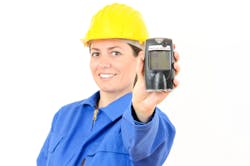Reducing Carbon Monoxide Exposure with Portable Generator Use
Carbon monoxide (CO) poisoning due to improper generator use is a serious risk not just during cold weather, but all year round.
OSHA is reminding employers and safety professionals to ensure workers are protected against CO exposure to the colorless, odorless gas that can cause neurological damage, coma or death.
When fuel-burning equipment and tools are used in buildings or semi-enclosed spaces without adequate ventilation, overexposure can occur. The danger increases during the winter months when this type of equipment is used in indoor areas that have been sealed tightly to block out cold temperatures and wind.
CO exposure is not specific to one occupation. Welders, mechanics, brewers, taxi drivers, toll booth attendants and police officers are just some of the workers who could be exposed on the job.
The CO permissible exposure limit (PEL) is 50 parts per million (ppm). OSHA standards prohibit worker exposure to more than 50 parts of the gas per million parts of air averaged during an 8-hour time period, according to the agency.
Symptoms of overexposure include headaches, dizziness, drowsiness, nausea, vomiting, or tightness across the chest, while prolonged exposure can pose more dire health effects.
In addition to portable generators and space heaters, sources of carbon monoxide can include anything that uses combustion to operate, such as power tools, compressors, pumps, welding equipment, furnaces, gas-powered forklifts, and motorized vehicles, according to OSHA.
To reduce the risk of carbon monoxide exposure in the workplace, employers should follow 10 recommendations OSHA outlines in its Carbon Monoxide Poisoning fact sheet.
If someone has been exposed, OSHA states the following steps should be taken to save lives:
- Move the victim immediately to fresh air
in an open area. - Call 911 or another local emergency number
for medical attention or assistance. - Administer 100-percent oxygen using a
tight-fitting mask if the victim is breathing. - Administer cardiopulmonary resuscitation
if the victim has stopped breathing.
However, the agency also cautions that there could be a high risk to fatal levels of CO during a rescue attempt. Rescuers should be skilled at performing recovery operations and using recovery equipment. In addition, employers should make sure that rescuers are not exposed to dangerous CO levels when performing rescue operations, the agency says.
